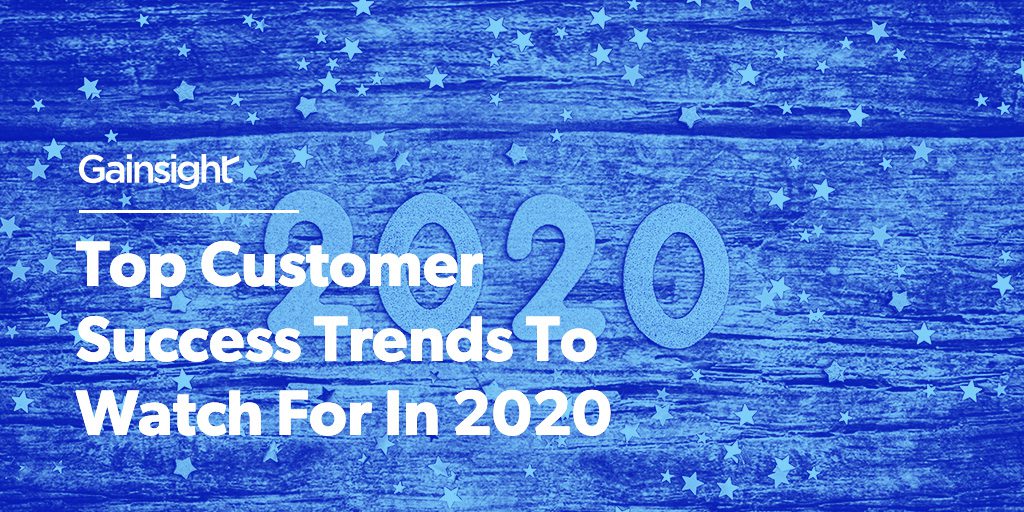On a recent webinar with one of our private equity partners, Gainsight CEO Nick Mehta shared an inspiring outlook on what’s to come in the year 2020 for customer success. The industry is constantly evolving and it’s important to stay ahead of the curve with new concepts and trends. This is a partial transcript of Nick and Gainsight’s vision of the future of customer success. It’s been lightly edited for clarity and length and includes slides from Nick’s presentation.
Nick Mehta
As we get ready to plan for the new year, there are five themes of customer success that I think should be top of mind for 2020. These are the things I think world-class customer success teams are doing in this new world. I’ll go from the top clockwise [image below] and I’m going to dive into each of these. So on the top, human first leadership, the idea is basically, although customer success as we’ll talk about is a lot about data analytics and renewals and things like that.
At the end of the day, a lot of it is about the people in your company, your CSM [Customer Success Manager], the rest of your team building those kinds of relationships and understanding that people are your customers. And there’s a lot of what I would consider a traditional old-school account management kind of models that are being brought into customer success now in terms of mapping your organization, your stakeholders, understanding sentiment among others things. So that’s kind of number one. Sometimes CSPs [Customer Success Professionals] didn’t have this cause they hadn’t gone through sales training, they didn’t understand all the basics that maybe a salesperson might. That’s a big, big trend.
The second trend is what we call “Operationalizing Outcomes.” The idea is basically we know that it’s not just about driving adoption for our customers, it’s actually about getting them to business value—to outcomes. But how do you put that into practice?
Number three is what we call “Customer Data Infrastructure.” So many of our customers have said, look, we know data is the most important kind of Holy Grail in terms of getting more efficient, but we’ve always been on our back foot around data in terms of just understanding our data or having it be clean. So a lot of companies are really getting more organized about that.
And fourth we call it “Product Takes Center Stage.” The idea is that customer success and CSM teams are only as good as the product that they’re working with. And at the end of the day, the product can either be your biggest strength or your biggest weakness as a CSM. And so how do you collaborate better between CS and product?
And then finally, customer success often started out in a very defensive model, you know, reduce churn and drive renewals, prevent bad things from happening. And a lot of people are now taking it and saying customer success needs to determine the customer growth, and as a team, how do we become responsible for revenue?
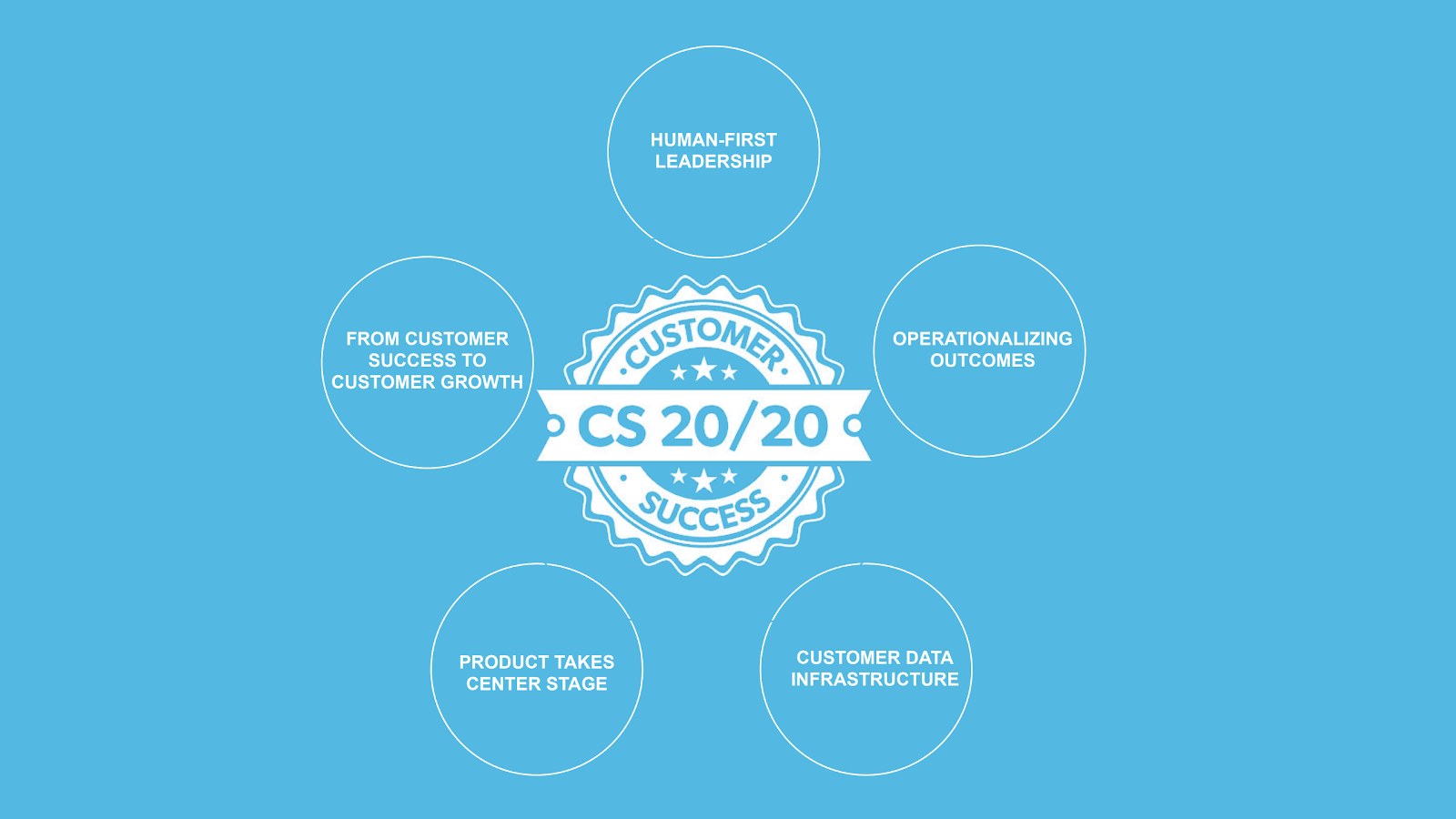
So let’s dive into each one of these. And what I’m going to do is show you these themes in general and then actually show you how we’re trying to put them into practice at Gainsight. So, customer success to customer growth. I think the core concept is pretty simple. The most “motherhood and apple pie” stat in customer success history, which is 80% of your revenue comes from just 20% of your customers. I think everyone’s seen that. It’s a Gartner stat and lots of people talk about it.
So what’s the reality? How do we get deeper than just that high level a prism? That 80% of revenue comes from 20% of your customers. We did a survey of chief revenue officers and we actually asked them, okay, right now what’s happening in terms of how CROs are prioritizing their time and their revenue? So historically, you know, the prioritization would be more sales reps, more solutions consultants, more marketing spend maybe. And what we found with Altify in this study is that although new customer acquisition is still certainly a huge thing, increasingly two things are coming up, Customer experience as a focus from the CRO and saying, okay, more revenue comes based on experience and expansion from existing customers being the outcome of that. And so that was actually really encouraging for us to see that chief revenue officers are prioritizing this. It’s not just sort of a CS thing or a service thing.
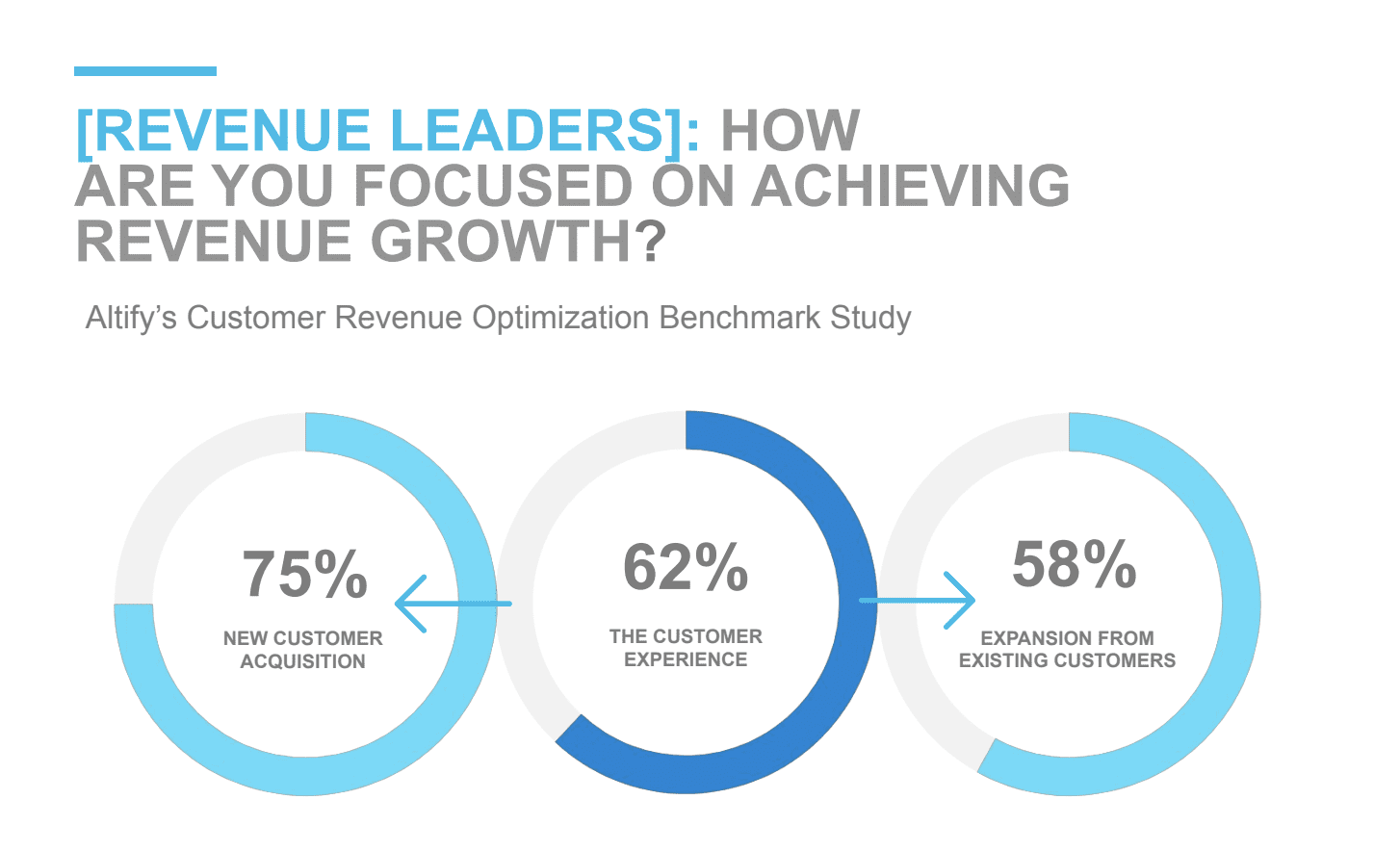
The second idea is you need to get more proactive about data. I think we all know data’s the biggest impediment for most companies to becoming customer centric very clearly. And specifically the biggest challenge people have is these three specific problems that we see.
Number one is gathering the data into one place. That’s actually not that hard anymore, and if you’re struggling with it, I think there’s some really simple solutions. The biggest challenges are second and third, which are unifying the data—and many of you have gone through this—you know, you have one definition of account, you know, X customers is defined one way in one database and you may find it a different way in another. Or you have IDs that don’t match up, things like that. And then the other is “activate,” which is actually then driving action on it, which is the biggest strategic challenge. And so I’m going to talk about some ways people are tackling this in terms of unifying their data.
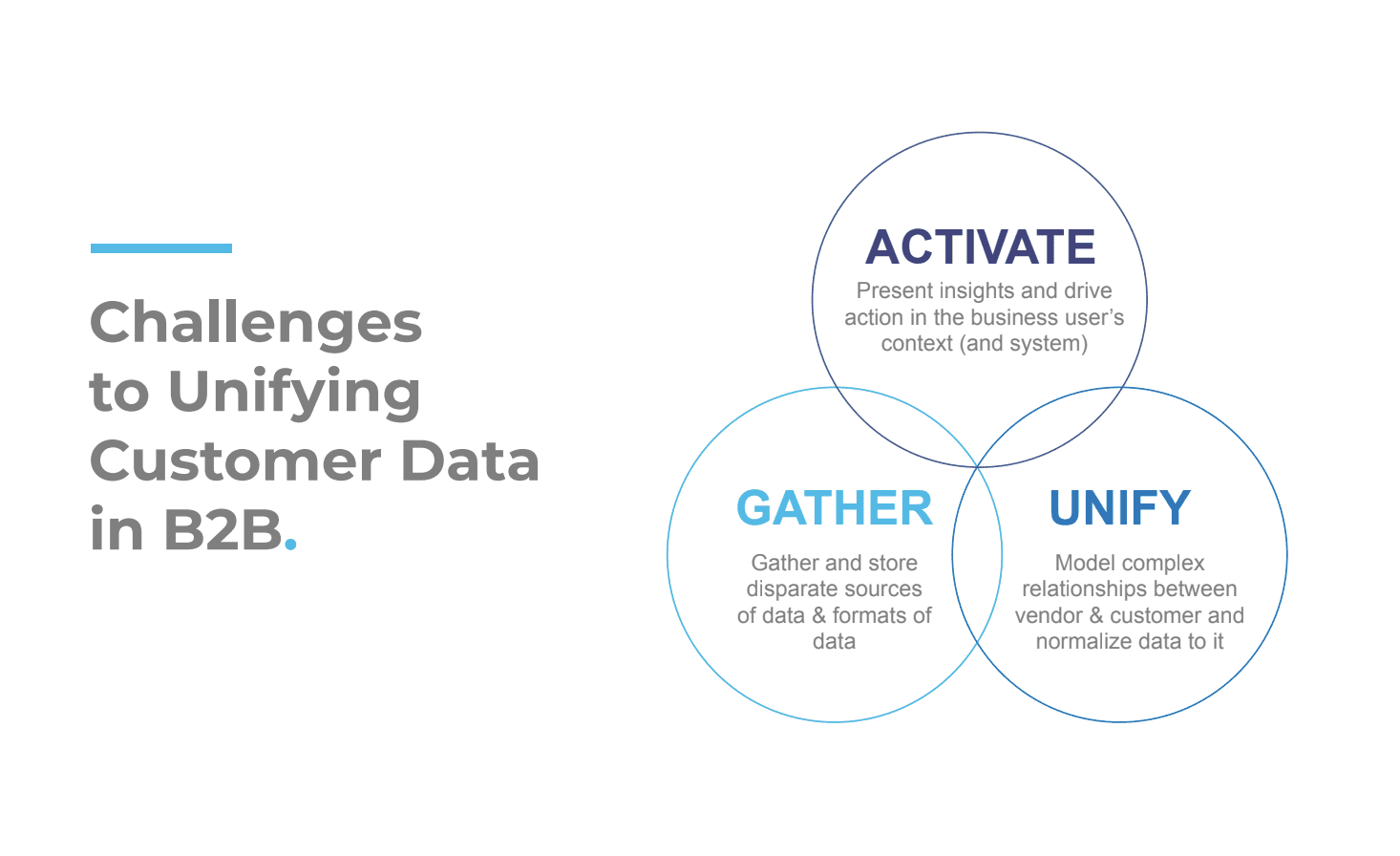
Another theme is the idea of human first leadership. The concept is that it’s not just about the data, it’s also about the people side of it. We all know that customer experience and kind of the feeling the customer has is a huge business driver. I think everyone that’s in this profession knows that there’s some good stats out there that kind of makes the case from Forrester about how it’s a competitive edge and it drives growth faster, etc. But what made it a little bit more interesting is the idea that in B2B, which most companies on this call probably are, the customer experience is significantly behind B2C. If you compare your experience, you know, getting a ride share or using an Airbnb, for example, with the experience you have maybe using software from vendors, right? There’s a huge gap. And so we’ve built the slide [below] to kind of show what is kind of this human centric approach look like in a B2B world and mapping it to B2C cause a lot of companies are taking the B2C playbook and applying it directly, but it doesn’t actually always translate what customer experience and a human approach look like in B2B.
So in the B2C world, everyone wants to capture a customer’s feedback. As an example, customers are asked, “How was your flight,” you know, they email you after the flight even if it was delayed, you know, “Tell me your experience.” But in the B2B world, what we’re finding is more and more companies are saying, I’m wanting a more holistic definition of customer experience. I need to capture, not just survey feedback, but all the different touch points across the lifecycle. I want to bring in data about their actual outcomes and things like that. So that’s a big, big thing that we’ll talk more about.
The second thing is in B2B versus B2C, you have this idea of multiple stakeholders. You know, when I fly on an airline, I’m the decision maker, I’m the approver, I’m the user, like the same person. But in the world of B2B, obviously there’s multiple stakeholders, you’ve got to be able to think about this in a more complex way.
And then finally this idea that closing the loop in the B2C world is kind of optional. But actually in the B2B world it really is mandatory and these customers pay you way too much money to sort of get their feedback and then not do anything about it. So what we’re seeing is the B2B world is really driving a very different need for how to think about this kind of human customer experience. And I’ll show you some examples of how we’re looking to do that at Gainsight.
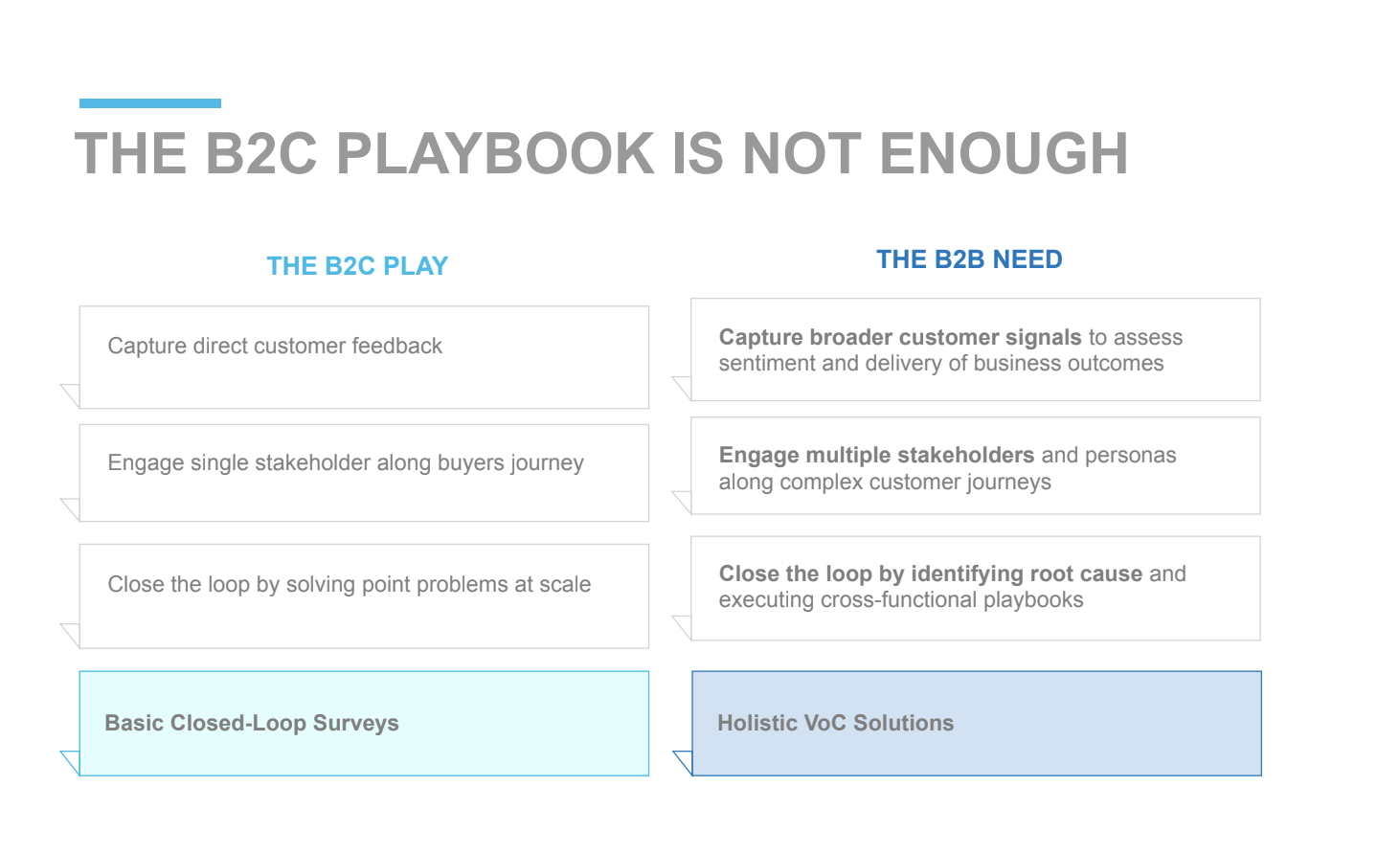
The fourth trend to watch for in 2020, is what we call “Product Experience Takes Center Stage.” And again, I think anyone in CS understands that at the end of the day, your product is your greatest strength or your greatest weakness. We asked people in the survey, okay, what do you want from your Product organization? And most people want a very close relationship where you’re working with that Product team, giving them feedback on the product, understanding how people are using it and collaborating together. But most people don’t have that today. And one of our missions today is to close that gap between Product and Customer Success.
We believe customer success in some ways was created in part because of this gap between what a customer wants, their desired outcomes, and what the product delivers on its own. That’s the gap that many of us end up filling every day. But one of the things we’ve figured out is that companies that are able to collaborate more tightly with Product and CS and close this gap, then the CSM can move on to actually expanding revenue, growing the company faster instead of just kind of closing product gaps as a human being. So what we recommend in terms of best practices in this trend is three core ideas:
Number one is getting a better and more data-driven approach to product roadmap decisions between CS and Product, right? And really having them take a collaborative approach.
Number two is, accelerating onboarding. So it’s not just about the CSM doing it in a manual way, you know, reaching out to customers, asking them about new features. But how do you do it in a more digital way and coordinated with the CSM?
And then finally, how do you use the data coming out of product to inform you about the customer experience and likelihood to retain?
These three best practices came from an organization called TSIA and they’re trying to drive integration between Product and CS like we are.
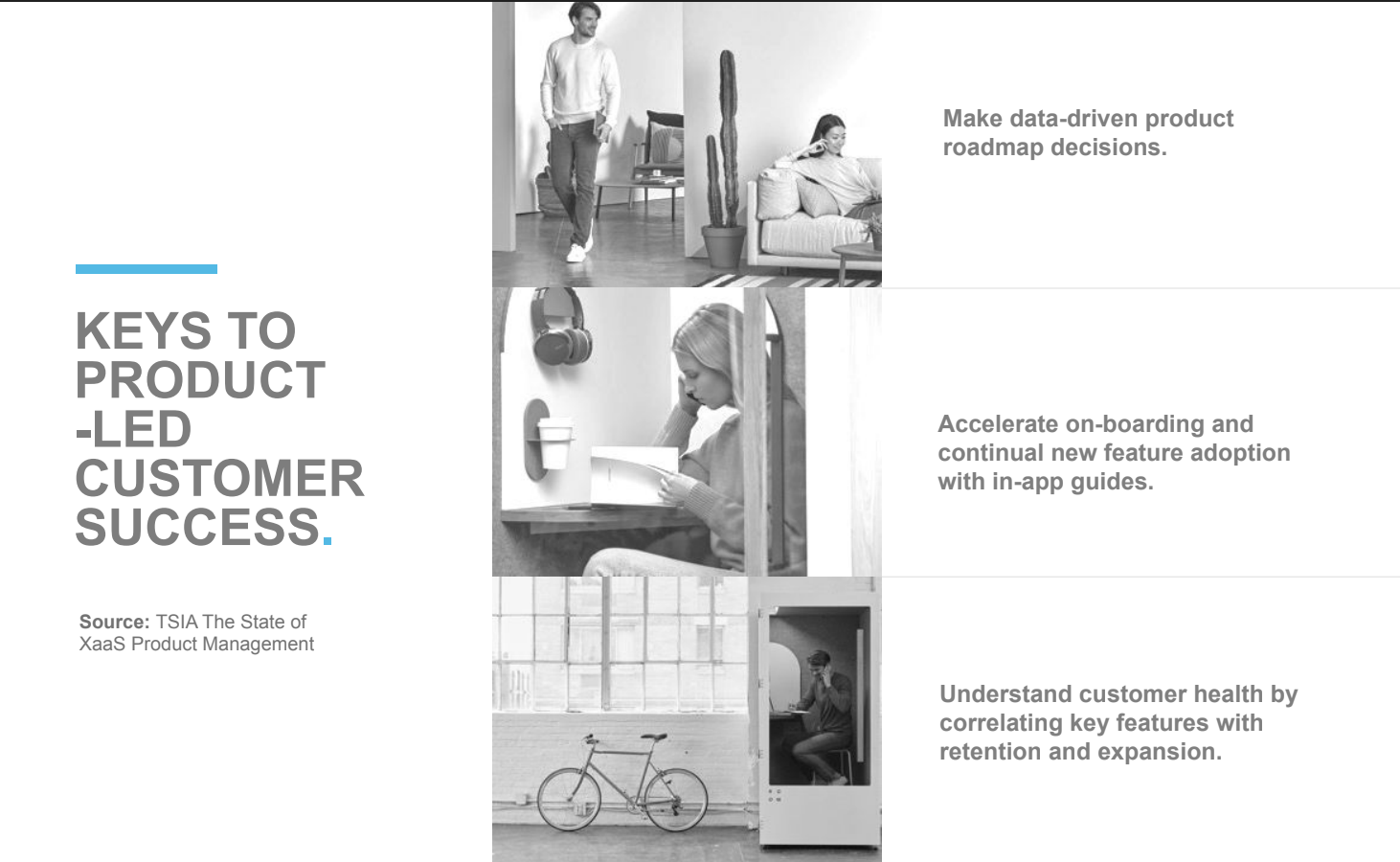
Finally, the last trend is what we call “Operationalizing Outcomes,” and the idea is at the end of the day, people don’t buy your product and just log into it, you know, they buy it because they want to drive a business outcome. So we talk all the time about adoption and usage. But the truth is they’re trying to drive business value.
The challenge most people have had is that business value is actually pretty different. Client to client, business to client, and how do you operationalize outcomes? And I’m going to show you an example of how we’re trying to do that at Gainsight.
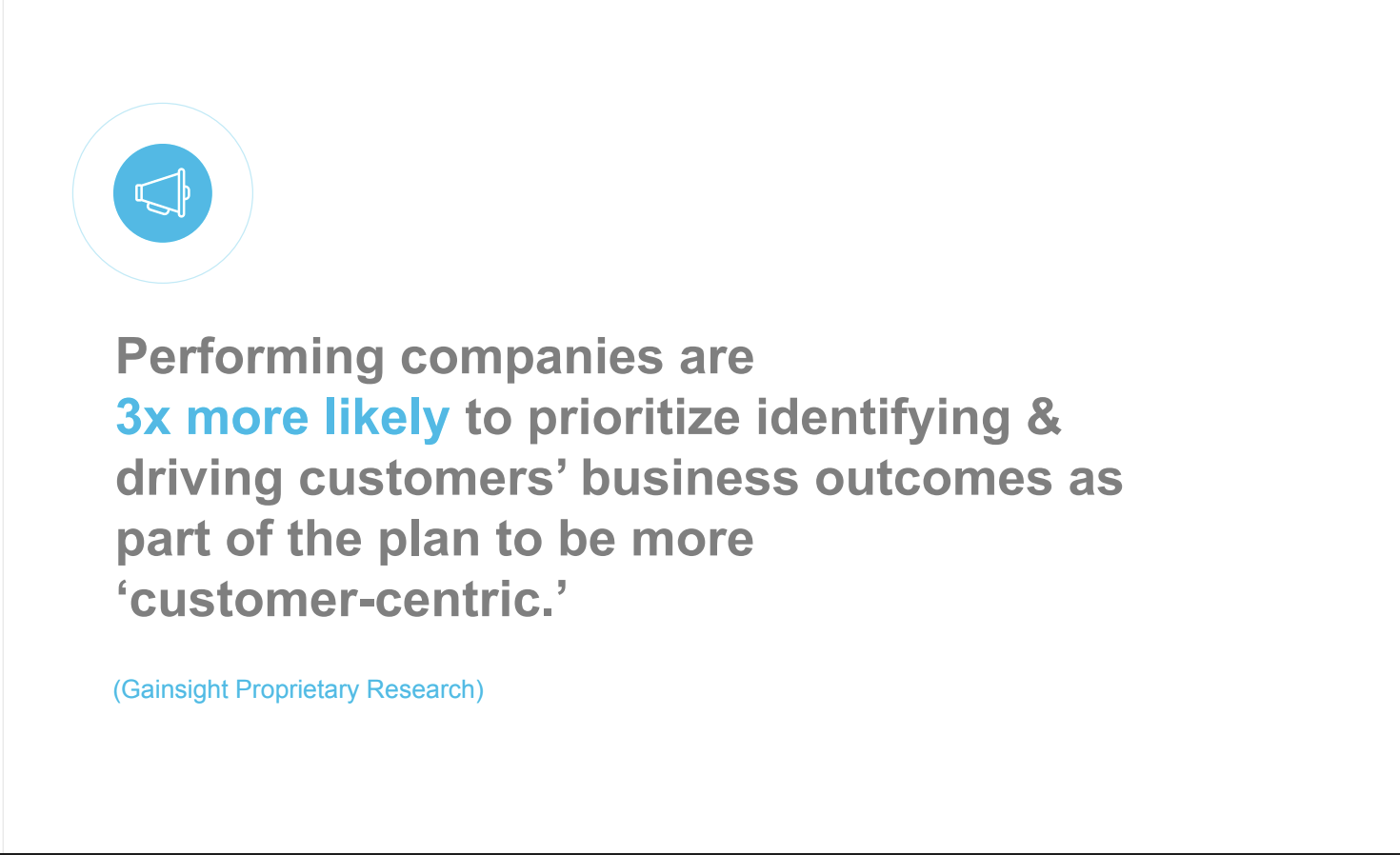
The net result is that it’s not just about the usage data, the health scores or even the outcomes, but it’s also about the people side of the business and knowing what’s happening at your client. I hope that I’ve left you with some inspiring ideas of what’s possible in the new year and then how we practically are trying to do it. Gainsight is just one example, and I know businesses are different, but I do know we’re all in this journey together.
